New Zealand votes to keep its national flag in £12m referendum
More than 56 per cent opt to keep existing design over proposed silver fern motif
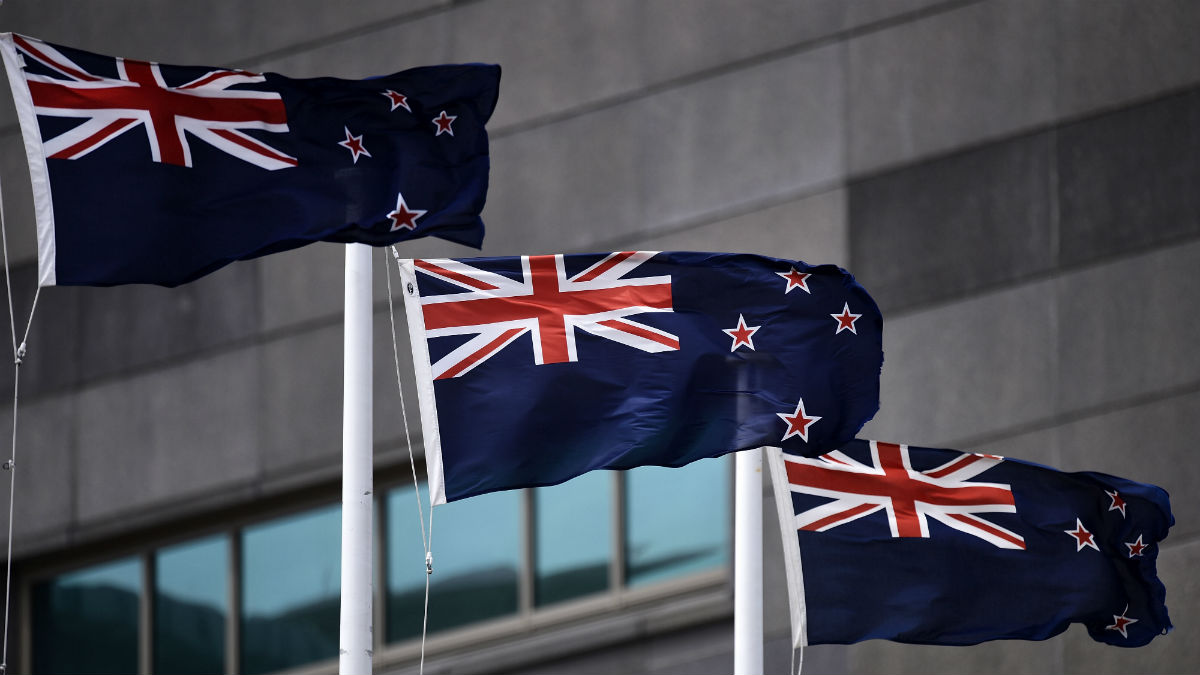
New Zealand has voted to keep the current design of its national flag, according to preliminary referendum results.
The country held a nationwide contest to design a new national flag in May last year and the referendum was to choose between the current design and a new silver fern motif.
After more than 2.1 million votes were cast, early results have given the original flag a 56.6 per cent win, compared to 43.2 per cent for the changed version.
The Week
Escape your echo chamber. Get the facts behind the news, plus analysis from multiple perspectives.

Sign up for The Week's Free Newsletters
From our morning news briefing to a weekly Good News Newsletter, get the best of The Week delivered directly to your inbox.
From our morning news briefing to a weekly Good News Newsletter, get the best of The Week delivered directly to your inbox.
A final result, taking into account late ballots, will be announced next Wednesday.
The result brings to a close a two-year process which culminated in the first-ever public vote by a country on its national flag.
Prime Minister John Key had been a keen advocate for change when he launched the referendum in March 2014. At the time, polls had shown the New Zealand public backed replacing the century-old design, which features the British Union flag as a legacy of the country's past.
Speaking after the result, Key said the country should embrace the current flag and take pride in it.
A free daily email with the biggest news stories of the day – and the best features from TheWeek.com
Deputy Prime Minister Bill English praised the "robust democratic process", saying: "I acknowledge there will be those who are disappointed with the outcome, but the majority of New Zealanders have spoken and we should all embrace that decision."
While around half of the country's 4.5 million inhabitants voted, many criticised the NZ$26m (£12m) spent on the process.
Change the Flag campaign chairman Lewis Holman told The Guardian it was the new flag's design which had failed to inspire the public and that the appetite for change was growing.
"What the result says is we have won the debate in changing the flag, we just lost it around process and design," he said. "I do think a flag change will happen in the next decade. This has kicked off the debate. This isn't the end, just the beginning."
New Zealand artist Kyle Lockwood's rejected design combined a silver fern with the four red stars representing the Southern Cross constellation from the current flag, but was criticised for its lack of historical emblems.
"The option for a new flag is so historically rootless and culturally banal it is embarrassing," Bruce Logan wrote in a column for the New Zealand Herald. "It is as superficial as a television bank advertisement."
New Zealand flag: 'swastika' row over new wildcard entry
24 September
A late-entry design for New Zealand's new flag referendum has been compared to the Nazi swastika.
The Red Peak design was added to the shortlist yesterday after a U-turn from Prime Minister John Key. The inverted V-shape design was not included in the final four entries, but Key has now allowed it in after 52,000 people signed a petition to have it included.
"In the end, I'm not wanting to be the one that stands in the way of people having some choice," he told reporters.
During a debate in parliament, opposition party New Zealand First claimed the flag could be used as a Nazi symbol. NZ First MP Denis O'Rourke demonstrated how the design could be made to resemble the swastika if four of the flags were placed together.
The deputy of the party, Ron Mark, said: "How offensive is that to veterans? It's going from farcical to ridiculous. We don't want a bar of it."
The referendum, which will open in November, will ask New Zealanders which of the five designs they prefer. It will be followed by a second vote in 2016, which will ask whether they want to scrap the existing flag – which features the Union Jack – and replace it with the winner. New Zealand First wants to keep the existing flag.
Red Peak was designed by Aaron Dustin, who explained on his website that the flag was intended to be a new symbol that "expressed our NZ identity".
The other four entries have proven less controversial. Three feature a fern, which is a national icon, while the fourth design features a koru, which is frequently seen in Maori art.

New Zealand flag designs: the good, the bad and the ugly
May 19
New Zealand's government has been criticised after a nationwide contest to design a new national flag accepted an entry depicting a laser-firing kiwi.
During the first stage of the process, which lasts until August, any New Zealander can put forward a design for the flag. A 12-strong 'flag consideration panel' will then choose the best four submissions, which will be put to a two-stage referendum in March 2016.
The first stage will ask voters to choose between the four alternative designs; in stage two, they will choose between keeping the existing flag or switching to the chosen new design.
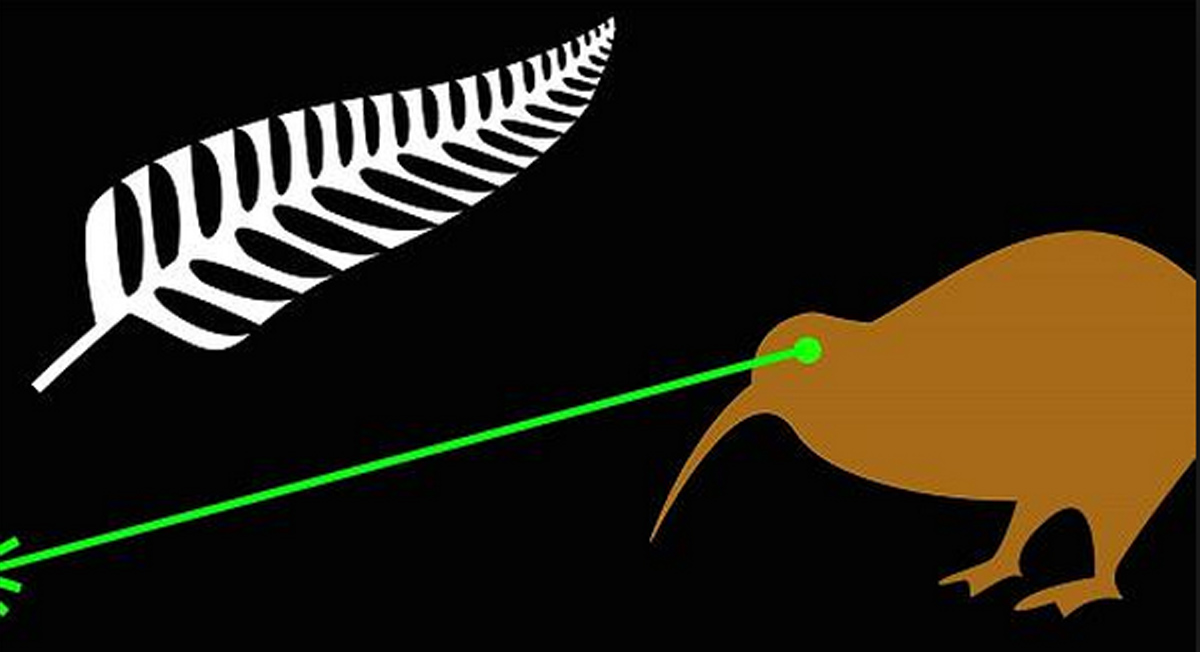
The convoluted process, which The Guardian says will cost nearly £12.5m, has been called into question in recent weeks by a New Zealand Herald poll which suggested only a quarter of the public supported changing the flag at all.
Supporters of the change cite the examples of Fiji and Canada, which have erased the symbols of their colonial legacies from their national flags.
Opponents, meanwhile, argue that the contest is not being taken seriously. The government website has guidelines on the 'Minimum Standards of Flag Design', but questions have been raised about the designs it has accepted, including the laser-eyed kiwi, and those it has not.
The Northern Territory News quotes a woman whose design – seen below – failed the minimum standards and was rejected:
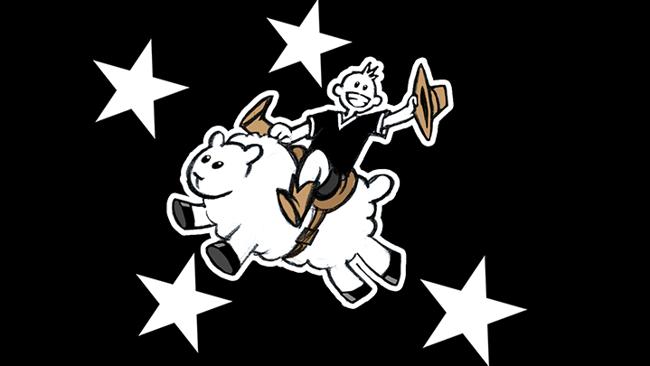
"Why was my flag considered inappropriate and yet it was acceptable to present a sheep with a star for an eye, or a kiwi shooting laser beams?" she said.
"How does a crappy smiley face or stick figure riding a bike get accepted, but a rural farmer enjoying New Zealand's farm life and representing our proud agricultural heritage does not?"
New Zealand flag: crowdsourced designs
Here are some other submissions ranging from the sublime to the ridiculous:
This design by Phil Plunkett, called 'Blue Sky, Blue Sea', underlines the importance of keeping design simple.

Many of the more eye-catching designs incorporate the Kiwi – the flightless bird and a national symbol of New Zealand.
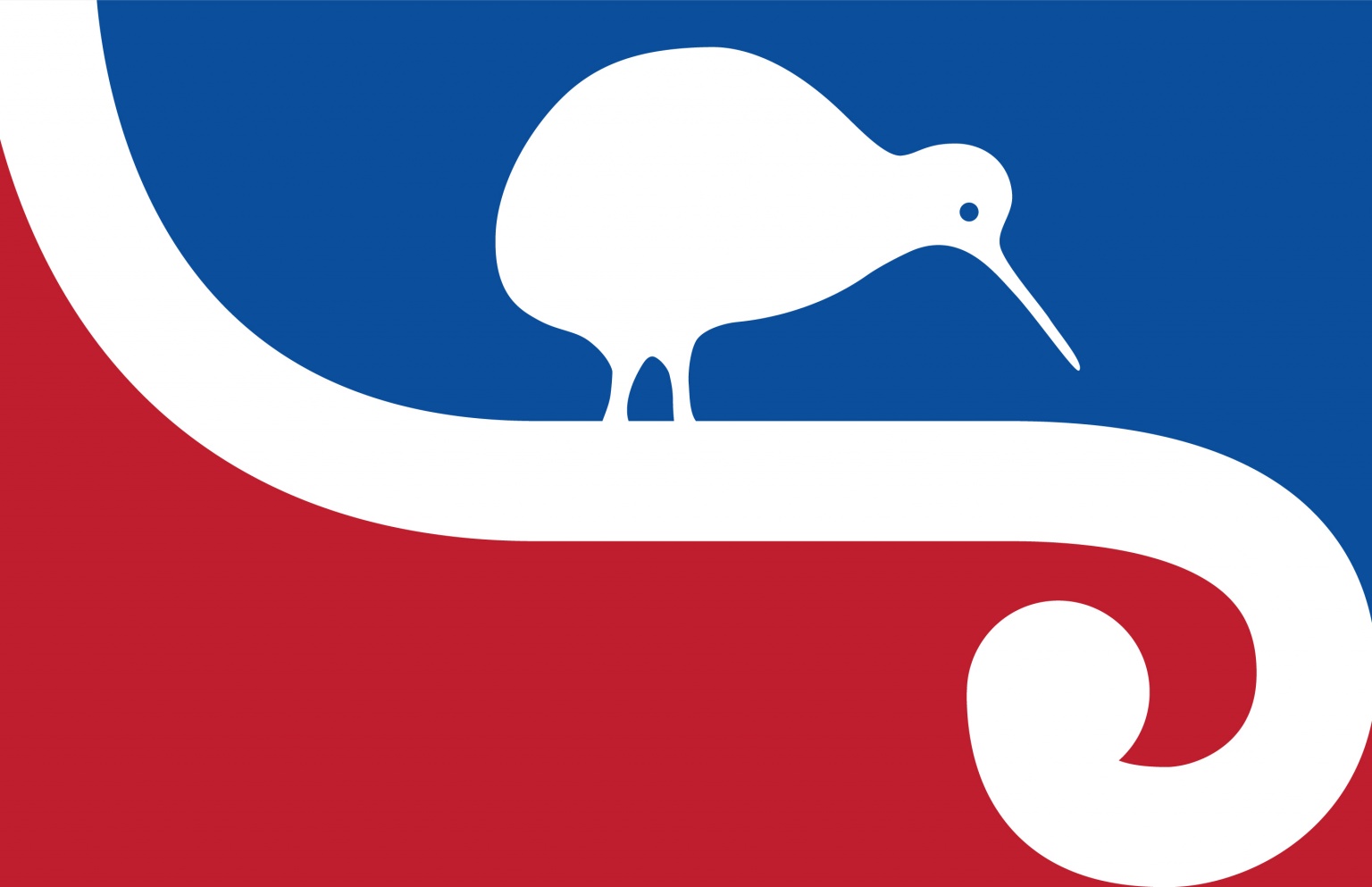
Some, however, use an unconvetional graphical style. This submission from Aku A in Waikato depicts a menacingly long-beaked Kiwi alongside the Southern Cross stars from the original flag.
[[{"type":"media","view_mode":"theweek_content_narrow","fid":"81982","attributes":{"alt":"","class":"media-image","height":"285","width":"460"}}]]
Another popular image is the Silver Fern, perhaps most commonly associated with the All Blacks, New Zealand's all-conquering rugby team. Here the blue and silver reference the 'long white cloud' - the literal translation of the Maori name for New Zealand, Aotearoa.
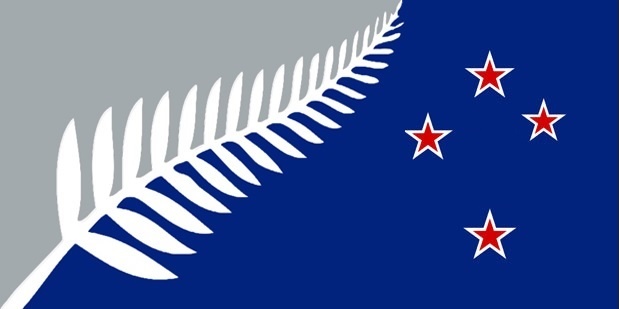
Some entries looked at New Zealand's future place in the world, this entry entitled 'The People's Republic of New Zealand' would pique the interest of a certain global superpower.
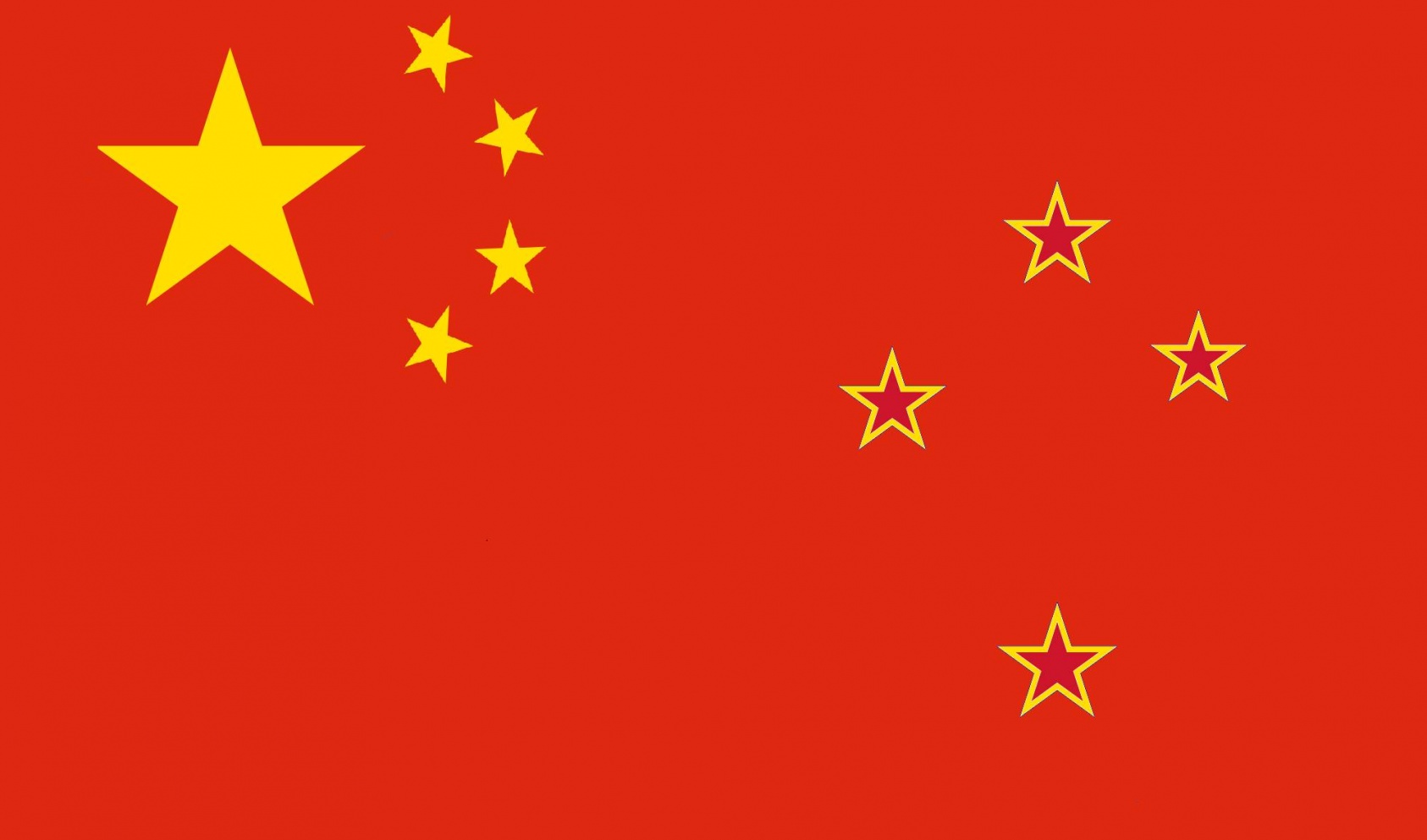
Others were content with featuring some of the nation's best known exports, with this entry entitled 'Band Meeting'.
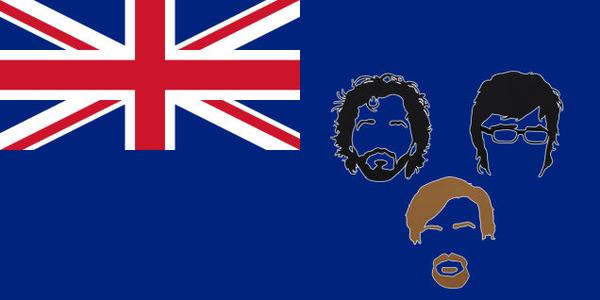
-
 How to financially prepare for divorce
How to financially prepare for divorceThe Explainer Facing ‘irreconcilable differences’ does not have to be financially devastating
-
 Why it’s important to shop around for a mortgage and what to look for
Why it’s important to shop around for a mortgage and what to look forThe Explainer You can save big by comparing different mortgage offers
-
 4 ways to save on rising health care costs
4 ways to save on rising health care costsThe Explainer Health care expenses are part of an overall increase in the cost of living for Americans
-
 How Bulgaria’s government fell amid mass protests
How Bulgaria’s government fell amid mass protestsThe Explainer The country’s prime minister resigned as part of the fallout
-
 Femicide: Italy’s newest crime
Femicide: Italy’s newest crimeThe Explainer Landmark law to criminalise murder of a woman as an ‘act of hatred’ or ‘subjugation’ but critics say Italy is still deeply patriarchal
-
 Brazil’s Bolsonaro behind bars after appeals run out
Brazil’s Bolsonaro behind bars after appeals run outSpeed Read He will serve 27 years in prison
-
 Americans traveling abroad face renewed criticism in the Trump era
Americans traveling abroad face renewed criticism in the Trump eraThe Explainer Some of Trump’s behavior has Americans being questioned
-
 Nigeria confused by Trump invasion threat
Nigeria confused by Trump invasion threatSpeed Read Trump has claimed the country is persecuting Christians
-
 Sanae Takaichi: Japan’s Iron Lady set to be the country’s first woman prime minister
Sanae Takaichi: Japan’s Iron Lady set to be the country’s first woman prime ministerIn the Spotlight Takaichi is a member of Japan’s conservative, nationalist Liberal Democratic Party
-
 Russia is ‘helping China’ prepare for an invasion of Taiwan
Russia is ‘helping China’ prepare for an invasion of TaiwanIn the Spotlight Russia is reportedly allowing China access to military training
-
 Interpol arrests hundreds in Africa-wide sextortion crackdown
Interpol arrests hundreds in Africa-wide sextortion crackdownIN THE SPOTLIGHT A series of stings disrupts major cybercrime operations as law enforcement estimates millions in losses from schemes designed to prey on lonely users